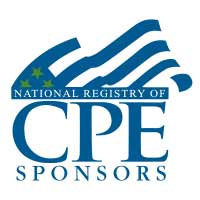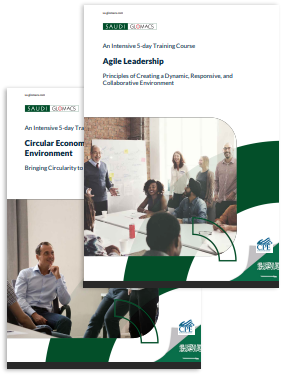An Interactive 5-Day Training Course
Subsurface Production Operations and Artificial Lift Technologies
Stimulations Operations and Artificial Lift Methods
Course Overview
This GLOMACS Subsurface Production Operations and Artificial Lift Technologies training course first provide an overview of well-performance evaluation leading to the determination of well conditions necessitating the application of artificial lift and stimulation operations. It will also give an overview of formation damage and the remediation techniques, covering all causes of the formation damage (during drilling, cementing, production).
Then, the various types of artificial lift systems along with their selection criteria, will be presented. The theoretical and practical aspects of the most essential artificial lift methods will be covered. At the end of the training course, the participants will have a sound knowledge of the theory underlying each technique as well as a broad view of the relative advantages, disadvantages, niche of applications and limitations of each artificial lift system.
This GLOMACS training course will feature:
- Reservoir Performance: Inflow and Outflow Relationships
- Reservoir Properties Review - What properties most influence the effect of formation damage?
- Damage Mechanisms - How are sandstones and carbonates damaged, how do formation mineralogy and clay chemistry influence damage, what about scale, paraffin, etc.
- Damage Prevention - drilling completion, and production methods, drilling / completion fluid and additive selection
- Evaluation of Damage - production performance, pressure analysis review
- Damage Removal - acidizing materials and methods, non-acid approaches, such as wellbore washes, perforating techniques, and hydraulic fracturing to bypass damage, etc.
- Overview of the Artificial Lift Technologies
- Equipment and Accessories of the Artificial Lift Systems
- Artificial Lift Screening: Criteria for Selection of the Artificial Lift Systems
- Design of the Artificial Lift Systems
- Limitation and Advantages of the Artificial Lift Systems
Training Outline
DAY 1: Reservoir Performance – Inflow and Outflow Relationships
- Reservoir Performance: Wellbore and Reservoir Performance Overview
- Pressure Loss in the Wellbore
- Well Productivity
- Concepts of Productivity Index
- Inflow and Outflow Relationships
DAY 2: Formation Damage
- Formation Damage
- Well Production Problems: Asphaltenes, Waxes, Hydrates, Inorganic, Scale Formation, Corrosion
- Drilling-induced Formation Damage
- Damage Mechanisms - How are sandstones and carbonates damaged, how do formation mineralogy and clay chemistry influence damage, what about scale, paraffin, etc.
- Formation Damage Causes
- Formation Damage caused by Completion and Workover Fluids: Damage during Perforating and Cementing
- Formation Damage caused by Fines Mitigation
- Formation Damage caused by Swelling Clays
- Formation Damage in Injection Wells
- Formation Damage resulting from Paraffins and Asphaltenes
- Formation Damage resulting from Emulsion and Sludge Formation
- Formation Damage resulting from Condensate Banking
- Formation Damage resulting from Gas Breakout
- Formation Damage resulting from Water Blocks,
- Formation Damage resulting from Wettability Alteration, Bacterial Plugging
DAY 3: Stimulation Operations / Why and When do we need Artificial Lift?
- Damage Prevention
- Evaluation of Damage - Production Performance and Pressure Analysis Review
- Damage Removal: Two Basic Acidizing Treatments and Acidizing Materials and Methods
- Damage Removal by Chemical Solvents
- Acid Type and Concentration
- Evaluation of Acid Treatments
- Impact of Changing Well Conditions and Need for Artificial Lift
- Overview of Artificial Lift Technology: Sucker Road Pump Design, Hydraulic Pump Design, Jet Pump, Gas Lift, Electric Submersible Pump (ESP)
- Application of Artificial Lift Technology and its Limitations
- Artificial Lift Screening Methods
DAY 4: Sucker Rod Pumping and Gas Lift System
- Sucker Rod Pump Concept
- Limitations and Advantages of the Sucker Rod Pumping System
- Components of the Sucker Rod Pump
- Design of the Sucker Rod Pump
- Troubleshooting of the Sucker Rod Pump Systems
- Gas Lift Concept
- Gas Lift Types: Continuous and Intermittent Gas Lift
- Main Components of the Gas List System: Mandrels and Valves
- Gas Lift Design
- Effects of Temperature and Chokes
- Valve Spacing
- Equilibrium Curve and Continuous Flow Design
- Injection Gas Requirements
- Limitation and Advantages of the Gas Lift System
DAY 5: ESP System, Hydraulic & Jet Pumping and PCP systems
- Concept of the Electric Submersible Pump (ESP) System
- Equipment and Accessories of the ESP Systems
- ESP Design: Pump Performance Curves, Pump Intake Curves, Typical Problems, Installation, Troubleshooting - Best Practices for Installation and Maintenance
- Steps to Correctly Size an ESP System - Basic Sizing Principles for the Pump, Motor and Cable
- Importance of Correctly Matching Well Productivity to Pump Performance
- Use of Data to Diagnose Well / Equipment Problems
- Limitation and Advantages of the ESP System
- Concept of the Hydraulic Pumps
- Limitation and Advantages of the Hydraulic Pumps
- Concept of the Jet Pumping
- Limitation and Advantages of the Jet Pumps
- Concept of the Progressing Cavity Pump (PCP) Pumps
- Limitation and Advantages of the PCP Pumps
- Best Practices for Installation and Maintenance
- Criteria for Selection of Artificial Lift Systems and Artificial Lift Screening Methods
Certificates
- On successful completion of this training course, GLOMACS Certificate will be awarded to the delegates
- Continuing Professional Education credits (CPE) : In accordance with the standards of the National Registry of CPE Sponsor, one CPE credit is granted per 50 minutes of attendance
Accreditation


GLOMACS is registered with NASBA as a sponsor of Continuing Professional Education (CPE) on the National Registry of CPE Sponsors. NASBA have final authority on the acceptance of individual courses for CPE credit. Complaints regarding registered sponsors may be submitted to the National Registry of CPE Sponsors through its website: www.learningmarket.org.
All Training Seminars delivered by GLOMACS by default are eligible for CPE Credit.


About Saudi Glomacs
At Saudi GLOMACS, we specialize in delivering world-class training courses in Saudi Arabia and across various international locations. Our training courses are tailored to meet the unique demands of Saudi Vision 2030 and the Human Capability Development Program, focusing on empowering Saudi citizens and enhancing workforce skills. We offer diverse courses spanning leadership, management, engineering, and technical disciplines to cultivate expertise and drive professional growth. Our flexible learning options—whether in-person, online, or in-house—ensure accessibility and convenience for individuals and organizations alike.
With over 30+ years of experience through the GLOMACS global network, we are committed to delivering innovative, results-driven training solutions. Our expert instructors combine industry knowledge with dynamic teaching methods, fostering practical skill development and long-term career success. By choosing Saudi GLOMACS, you're investing in personal excellence and contributing to the Kingdom’s sustainable economic growth and vision-driven transformation.
What do you need to learn next?
Check our list of courses or let us customize a course for you.
View courses



